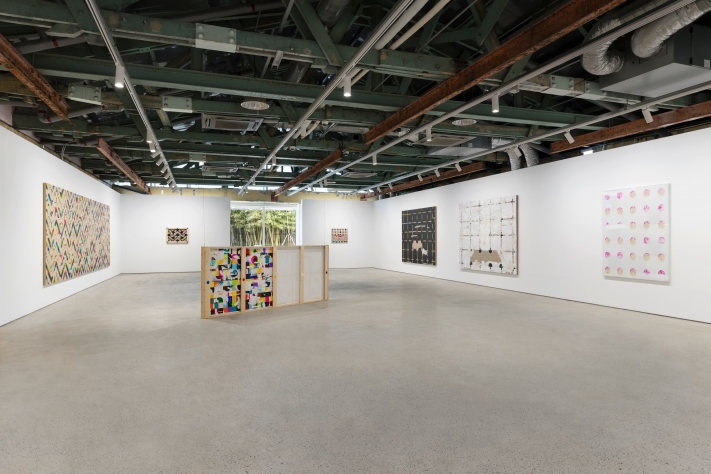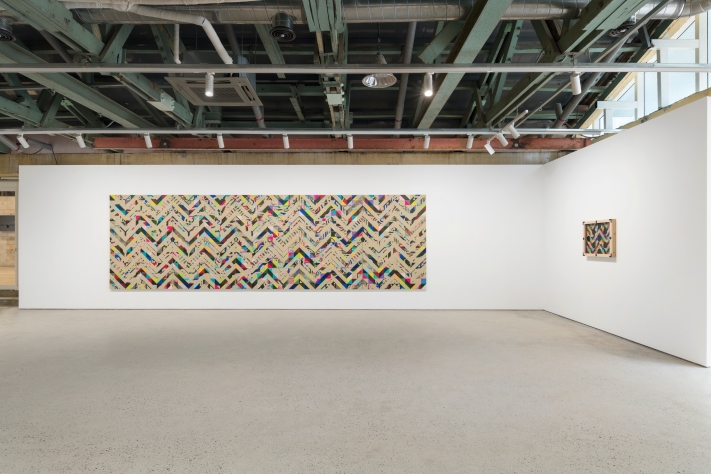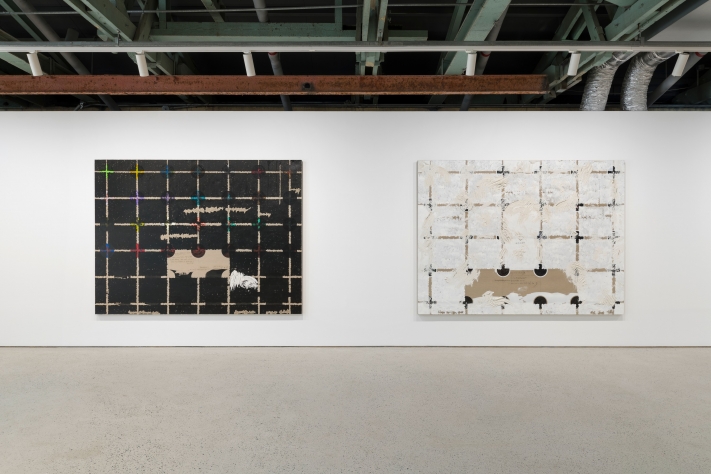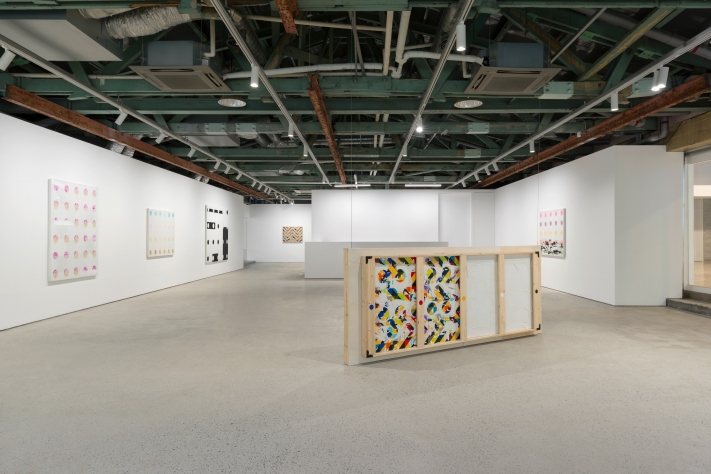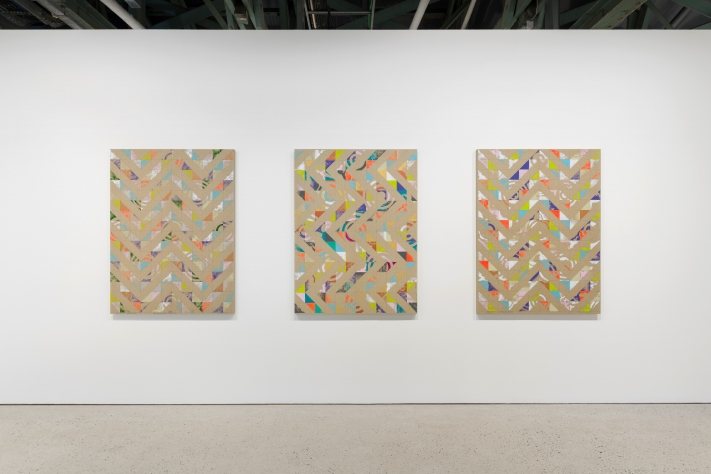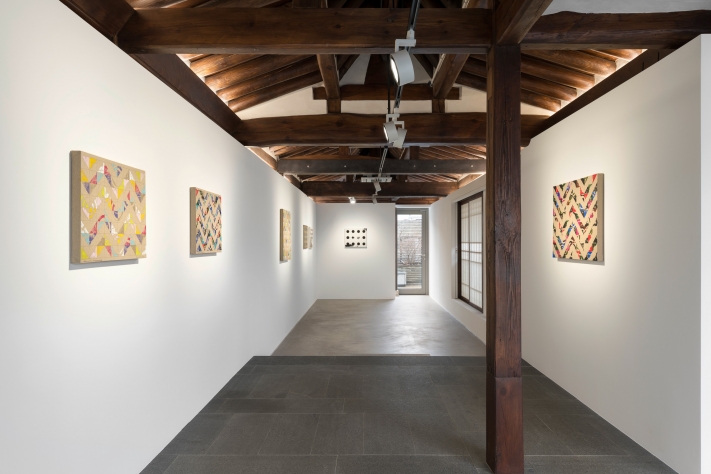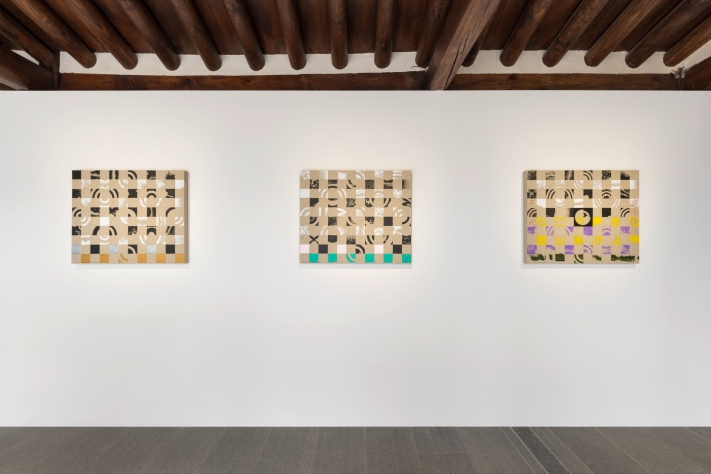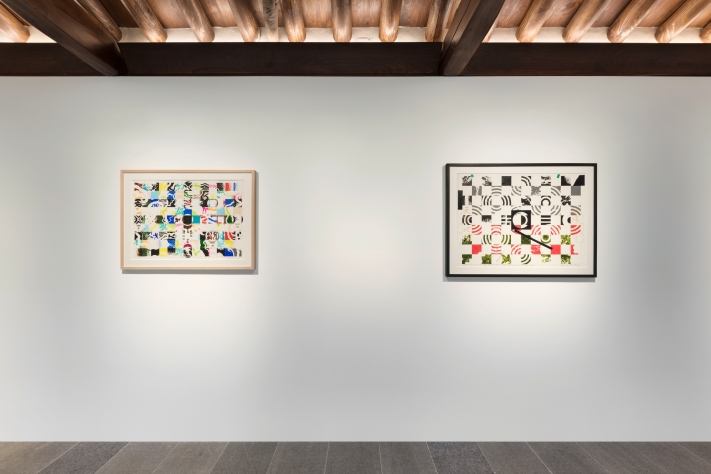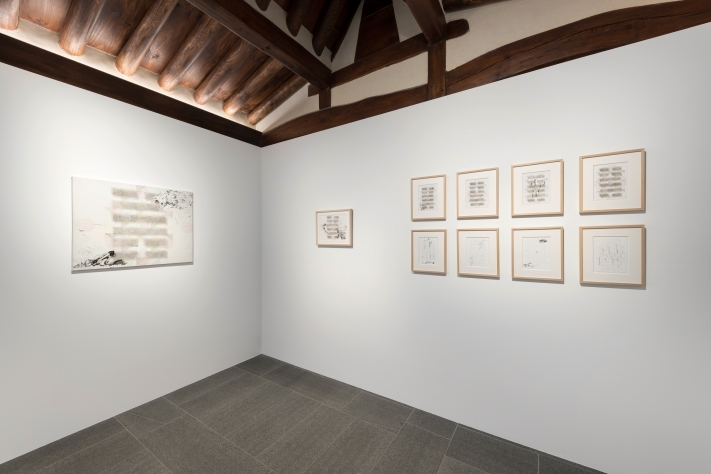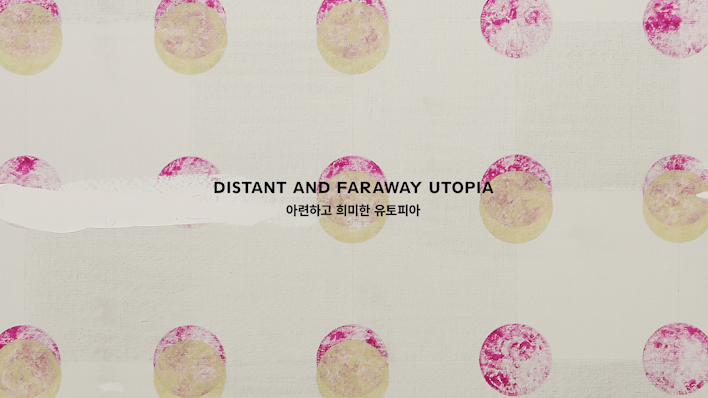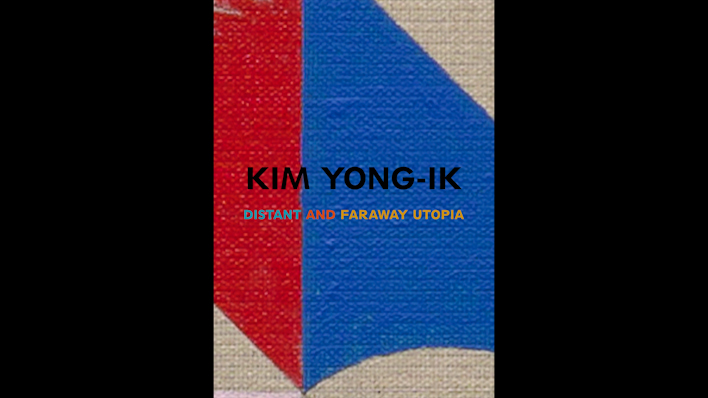Utopia was the Modernist dream. The dream that human reason, used and celebrated by the Enlightenment, will question nature, humanity, and the universe to establish new truths, and the development and progress of science and technology will lead us to utopia—that, ultimately, is the Modernist project. The project was partly realized, but its fruits were not evenly distributed, bearing catastrophic results such as class inequality among individuals and nations, imperialism, cannibal capitalism, and the destruction of nature. We are currently reckoning with this dark shadow. The endless war, terrorism, and climate crisis are a testament to the Modernist project’s failure.
…
Living through the age after the Korean War, I have been surrounded by material affluence unimaginable to me as a child. I am addicted to the sweet fruits of the Modernist project. I cannot live without my phone, computer, and car.
…
Utopia means the dream of the Modernist project. Feeling it as distant shows the lingering aspiration for this dream; nonetheless, it also connotes that I am no longer able to hold on to this aspiration as the dream is fading away.
– Kim Yong-Ik[1]
The dispute surrounding the possibility or impossibility of the Modernist project—closely linked to ideology or partisan logic—has been continuously debated but today is growing more intense because of the ecological threats posed to humanity. While experts from numerous disciplines have actively laid out strategies and solutions, the same questions remain: what are the ways in which art responds to the matter at hand? If a solution exists, what would its characteristic traits or qualities be? Despite the position of art as far from direct or activistic, should its role not be to confront, constantly reflect on, and faithfully attest to reality? Kim Yong-Ik’s lifelong practice is rooted in these questions and deliberation on the essence of art. In his work process, Kim repeatedly dwells on this search, balancing bitter despair and small glimmers of hope, and embracing the tension between the two as the source of vigor that sustains his work.
Kukje Gallery is pleased to present Distant and Faraway Utopia from March 15 to April 21, 2024. His first exhibition in six years at Kukje Gallery, Kim’s third solo exhibition will be held simultaneously in both the gallery’s Busan and Seoul Hanok spaces. Showcasing 46 recent works dating from 2016 (19 works in Busan and 27 works in the Hanok), this marks a major public presentation of the artist’s recent Exhausting Project series, which allows us to trace together the trajectory and transition of the established “polka-dot painter.”
On December 31, 2018, the artist embarked on his new series titled Exhausting Project, in which he proposes to exhaust all the art supplies left in his studio, including various paints and colored pencils, during his remaining lifetime. For this project, Kim sections the canvas into small parts to evenly accommodate all colors, resulting in geometric compositions that meet the ‘low entropy’ lifestyle he has always pursued as an artist. The artist remains frugal with the use of materials in order to delay their exhaustion; for example, Kim devised a method to apply the paint in thin washes to the surface, creating a faint and unvaried effect. In other works, the brushstrokes are light while rough textures become more prominent to the eye.
Kim’s remaining lifespan and the time available to him as an artist to expend all his supplies will not realistically coincide, but the artist still dreams of this unlikely intersection, which is the simultaneous ending of art and life. This desire sprouts from his pursuit of ecologically functioning works where the interplay between the individual and the environment unfolds together, rather than him creating a finished and packaged entity, presented solely for visual appreciation. “Art-becoming-life” has been a core theme throughout Kim’s entire career and practice; Kim is known for his belief that art is situated in an undefinable process of constant change, as exemplified in his drawings—a medium entangled with life that Kim uses consistently—and in his public art projects that began in 2000. Thus, working within the realm of fine art, Kim attempts to deconstruct prevailing hierarchies and paradigms produced by dichotomies, creating works that challenge the dominant traits of Modernist practice. Describing his work, the art historian Eun Young Jung commented that the ‘post-art drive’ for Kim is not a destructive drive to destroy or cease art itself, but a force to enliven art by embracing entropy and the path towards death inherent in life.[2]
Underlying the formal characteristics of the Exhausting Project is Kim's interest in the broader principles of cosmic change. The well-known Chinese philosophical text, the Book of Changes (or I Ching; 周易), labels opposing pairs of all objects and phenomena—such as heaven and earth, sun and moon, strong and weak, high and low—into yang and yin, and elucidates the principles of change based on their positions or states. In the current context where the Modernist project has failed in many aspects, Kim seeks an alternative in Eastern thought or philosophy, particularly drawing wisdom from the Book of Changes, for insights on overcoming the present crisis. In Kim’s Exhausting Project, the geometric shapes depicted on paper or canvas either take the form of the hexagram (卦)[3], a symbol made to suggest the direction for the future in the Book of Changes, or consist of circles and squares borrowed from Cheonwon Jibang (天圓地方), which translates as "Heaven is round, Earth is square," a fundamental concept in traditional Chinese cosmology.
Kim’s reference to Eastern philosophy reflects an effort to contemplate contemporary life and culture, and to ensure that art, however reconfigured, survives. Particularly, the recent pandemic experienced by humanity has catalyzed a shift in his artistic practice. According to the artist, the pandemic represents one of the consequences brought about by humanity’s excessive focus on growth, progress, and development—the dire consequences also including social unrest stemming from severe class inequality, terrorism and wars caused by national conflicts, and the looming climate crisis that threatens humanity's survival. The artist insists that the modern world facing these crises is the Later-Heaven (後天) era, which requires Joyang (調陽), meaning the temperance of the yang (such as progress and development, and competition and dominance) to foster the yin (such as care and service, and friendship and equality), thereby balancing yin and yang.[4] In response, Kim attempts to depict equilibrium and harmony between the yin yang, by arranging squares on the canvas that symbolize the earth alongside nine circles representing the sky and directions.
While the exhibition presents the significance of Kim Yong-Ik's latest work, the Exhausting Project, it also highlights that the new series remains as an extension of his previous works by exploring how he has created ruptures through the consistent variations of his polka-dot paintings in order to challenge the symbolism of Modernism. This connection is vividly presented in his installation, The Polka-dot Painter Is Not Guilty of His Transformation? (2023), placed in the center of Kukje Gallery Busan. In this work, two canvases, each in a negative format with inverted images of polka dots, are attached and framed. Two versions of this kind stand leaning against each other on the ground, allowing viewers to appreciate them as if they were sculptures. On the left-side canvas of each work, the Exhausting Project composition is prominently displayed in between the inverted polka dots. As the title suggests, although the artist seeks transformation from being a polka-dot painter, it shows that there is no significant gap between his previous works (referring to the series prior to the Exhausting Project) and his new works.
Other works on display in the gallery’s Busan space, such as Distant Utopia #17-2 (2017), Invaded Utopia #17-9 (2017), and This is not the answer #18-10 (2018), show imagery of discolored, overlaid, and damaged dots, reminding the viewer not only of Kim’s effort to create a mark of ‘imperfection’ on the authoritative surface of Modernist painting, but also of his continued inquiries into the relationship between art and life and art’s sustainability. These images are charged with emotions such as nostalgia, longing, and sadness derived from his self-realization that perhaps a critical stance alone falls short of an escape from the persistent influence of modern civilization. Notably, Incomplete Despair 22-1 (2016-2022) reveals a rather ‘modest’ approach of the artist, who has covered the painting with black paint gridded in a plaid pattern that allows glimpses of the pre-existing work still visible beneath. Meanwhile, the gallery’s Seoul Hanok presents Modest Affirmation (or Denial) of the Possibilities of Art (2022)—a series conceived as part of the Exhausting Project—a work with thinly applied acrylic paint on paper which contains tiny letters written by Kim within the narrow margin created by the dripping of transparent gloss medium. By accentuating the artist’s ‘modest’ introspection that straddles affirmation and negation of art, the series illuminates Kim’s philosophy, which should not be mistaken for nihilism, but rather seen as a concept based on self-negation—ultimately aimed at self-renewal. It is this modest proposal that serves a significant role in his oeuvre.
Adopting modesty as a place of power, Kim has expanded the definition and potential of art, life, and the gap he strives to bridge, struggling ‘in any case’ to remain within the sphere of art. By highlighting this journey, the exhibition Distant and Faraway Utopia provides a multivalent insight into Kim’s exploration of the dream of a Modernist utopia he himself attests to, the sense of nostalgia and despair evoked as it fades out into a disappearance, as well as the new direction that art should take, moving forward.
About the Artist
Kim Yong-Ik was born in Seoul, Korea, in 1947, and received his B.F.A. and M.F.A. in Painting from Hongik University. He co-founded the Alternative Space Pool in 1999 and served as its representative from 2004 to 2006. From 1991 to 2012, he worked as a professor in the painting department at Kyungwon University, engaging in art education for many years. Kim’s major solo exhibitions include To the Last Generation, Kim Yong-Ik (Art Archives, Seoul Museum of Art, Seoul, 2023); Speaking of Latter Genesis (Tina Kim Gallery, New York, 2019); This is not the answer (Barbara Wien Galerie, Berlin, 2019); Endless Drawing (Kukje Gallery, Seoul, 2018); and Closer...Come Closer... (Ilmin Museum of Art, Seoul, 2016). He has also participated in numerous domestic and international group exhibitions and biennales, including the 5th Yokohama Triennale (Japan, 2014); SeMA Gold 2012: Hidden Track (Seoul Museum of Art, 2012); the Geumgang Nature Art Biennale (Korea, 2010); Jack-of-all-trades: Korean Historical Conceptual Art 1970-80s (Gyeonggi Museum of Modern Art, 2010); and After the Grid (Busan Museum of Art, 2002), among others. His works are included in the collections of the Gyeonggi Museum of Modern Art, Kumho Museum of Art, National Museum of Modern and Contemporary Art (MMCA), Daejeon Museum of Art, Busan Museum of Art, Seoul Museum of Art (SeMA), Ilmin Museum of Art, Tokyo Metropolitan Art Museum, M+ Hong Kong, Los Angeles County Museum of Art (LACMA), Los Angeles Museum of Contemporary Art (MOCA), and many others.
[1] Artist’s statement (January 19, 2024).
[2] Excerpt from Eun Young Jung's presentation at the seminar "Post-ism Drive,” in the context of To the Last Generation, Kim Yong-Ik, a solo exhibition of the artist (October 5, 2023, Art Archives, Seoul Museum of Art, Seoul, Korea).
[3] The 64 characters in Eastern philosophy. Each character is constituted of six lines that symbolize yin and yang.
[4] Joyang Yul-eum (調陽律陰) meaning "tempering yang and activating yin" refers to the worldview introduced in Jungyeok (正易). Jungyeok is cosmology, advocated by Kim Hang during the late Joseon period, written with an independent understanding of the principles of the Book of Changes. Additionally, the concept of Later-Heaven Gaebyeok (後天開闢) represents a core belief of Donghak, which emerged in the late Joseon period, signifying the "opening of a new sky.”


